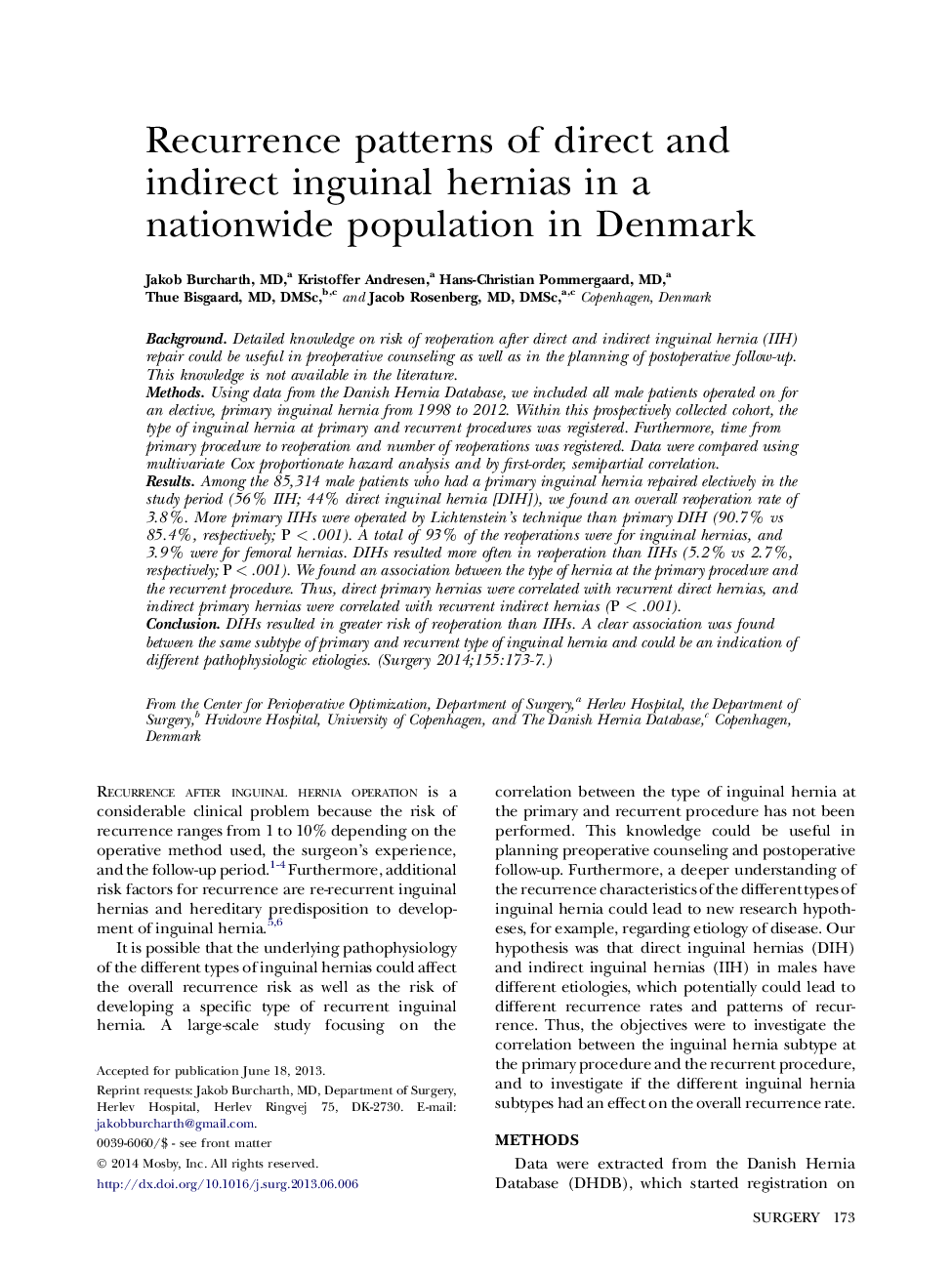| Article ID | Journal | Published Year | Pages | File Type |
|---|---|---|---|---|
| 4306871 | Surgery | 2014 | 5 Pages |
BackgroundDetailed knowledge on risk of reoperation after direct and indirect inguinal hernia (IIH) repair could be useful in preoperative counseling as well as in the planning of postoperative follow-up. This knowledge is not available in the literature.MethodsUsing data from the Danish Hernia Database, we included all male patients operated on for an elective, primary inguinal hernia from 1998 to 2012. Within this prospectively collected cohort, the type of inguinal hernia at primary and recurrent procedures was registered. Furthermore, time from primary procedure to reoperation and number of reoperations was registered. Data were compared using multivariate Cox proportionate hazard analysis and by first-order, semipartial correlation.ResultsAmong the 85,314 male patients who had a primary inguinal hernia repaired electively in the study period (56% IIH; 44% direct inguinal hernia [DIH]), we found an overall reoperation rate of 3.8%. More primary IIHs were operated by Lichtenstein's technique than primary DIH (90.7% vs 85.4%, respectively; P < .001). A total of 93% of the reoperations were for inguinal hernias, and 3.9% were for femoral hernias. DIHs resulted more often in reoperation than IIHs (5.2% vs 2.7%, respectively; P < .001). We found an association between the type of hernia at the primary procedure and the recurrent procedure. Thus, direct primary hernias were correlated with recurrent direct hernias, and indirect primary hernias were correlated with recurrent indirect hernias (P < .001).ConclusionDIHs resulted in greater risk of reoperation than IIHs. A clear association was found between the same subtype of primary and recurrent type of inguinal hernia and could be an indication of different pathophysiologic etiologies.
